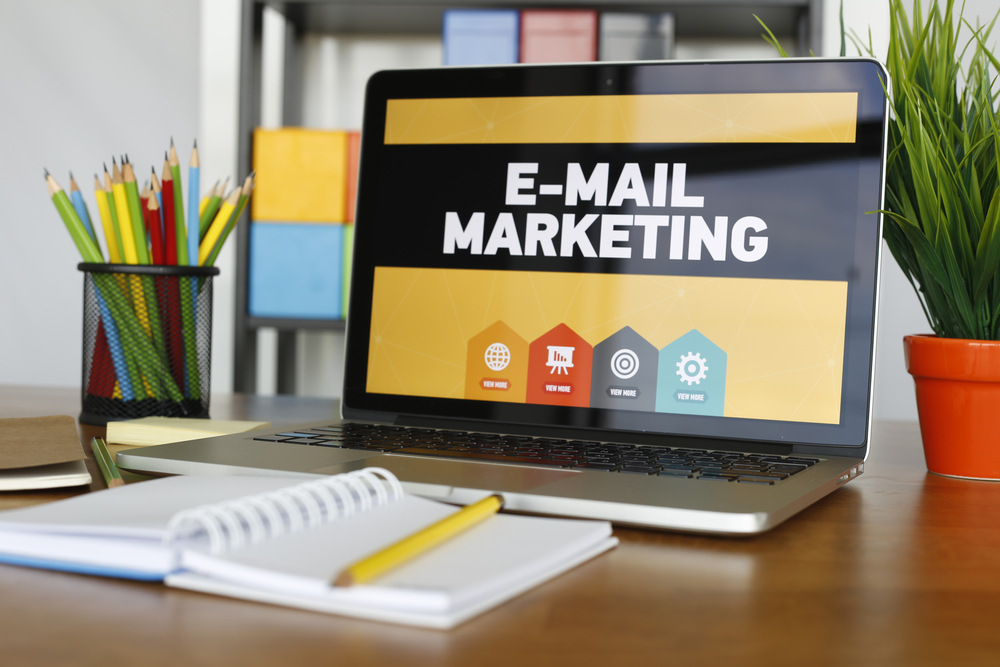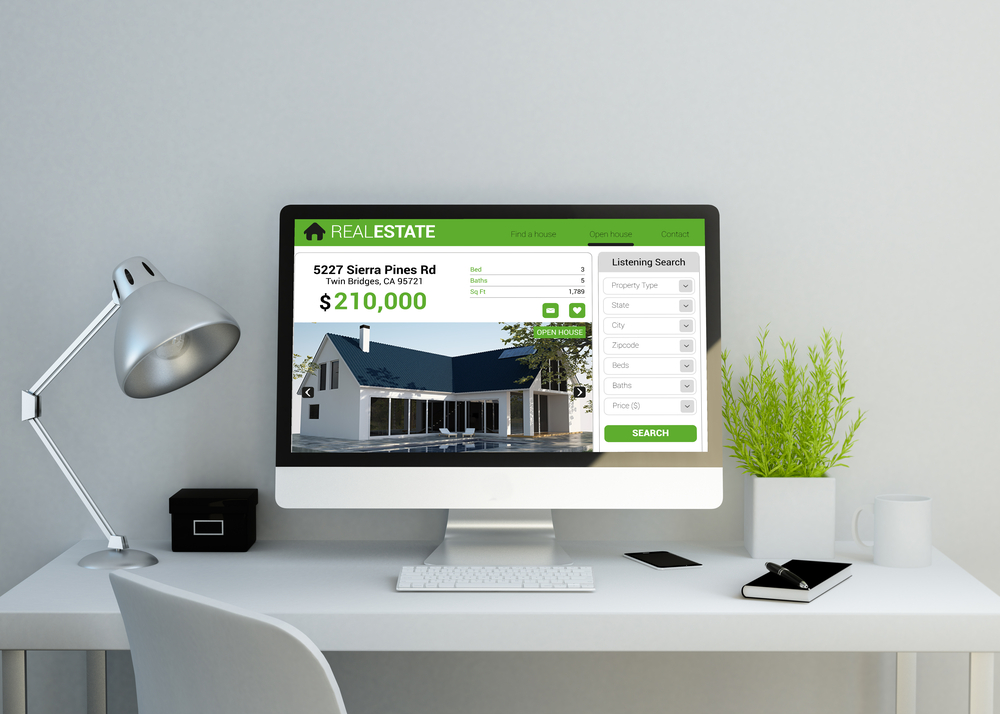Effective lead management is essential for success in the world of real estate.
A robust Customer Relationship Management (CRM) system acts as a powerful tool to organize, track, and nurture leads throughout their buyer’s journey.
In this article, we will explore best practices for managing and nurturing leads in a real estate CRM, empowering you to convert leads into loyal clients and boost your business growth.
Lead management involves the process of capturing, tracking, and nurturing leads from their initial contact with your business to the point of conversion.
A well-implemented CRM system streamlines lead management by centralizing lead data, automating processes, and providing valuable insights into lead behavior and preferences.
It allows you to stay organized, efficiently follow up with leads, and deliver personalized experiences at scale.
The Importance of Lead Nurturing for Conversion
Lead nurturing is a critical aspect of the lead management process. It involves building relationships with potential clients, providing them with relevant information, and guiding them towards a purchasing decision.
Lead nurturing focuses on fostering trust, addressing concerns, and delivering personalized experiences that resonate with the needs and preferences of individual leads.
Why is lead nurturing essential for conversion? Research shows that leads who are nurtured with targeted content and personalized communication are more likely to make a purchase.
Nurtured leads also tend to have a higher lifetime value and are more likely to refer others to your business.
By investing time and effort into lead nurturing within your CRM system, you can increase conversion rates, build long-term relationships, and drive sustainable business growth.

Organizing and Categorizing Leads in CRM Systems
Organizing and categorizing leads within your CRM system is vital for efficient lead management.
By implementing effective organization and categorization practices, you can easily track the progress of leads, prioritize follow-ups, and tailor your communication and marketing efforts. Here are two key best practices:
Creating Lead Stages and Statuses for Effective Tracking
Establishing lead stages and statuses allows you to track the progress of leads through the sales funnel.
Lead stages represent the different steps a lead goes through, from the initial contact to becoming a customer. Common lead stages include “New Lead,” “Qualified Lead,” “Negotiation,” and “Closed Deal.”
Lead statuses, on the other hand, represent the current state of each lead within the lead stage.
For example, a lead may have the status “Contacted,” “Appointment Scheduled,” “Follow-up Required,” or “Qualified.”
These statuses provide a snapshot of where each lead stands in the conversion process and help you prioritize your follow-up activities.
By assigning relevant stages and statuses to leads within your CRM system, you can easily identify leads that require immediate attention, track their progress, and ensure that no leads slip through the cracks.
Lead Stages and Statuses
| Lead Stage | Lead Statuses |
|---|---|
| New Lead | Contacted, Appointment Scheduled |
| Qualified Lead | Follow-up Required, Needs Analysis |
| Negotiation | Proposal Sent, Negotiating Terms |
| Closed Deal | Deal Closed, Contract Signed |
Segmenting Leads Based on Their Interests and Needs
Segmenting leads allows you to personalize your communication and marketing efforts, delivering targeted messages that resonate with each lead segment’s unique preferences.
By categorizing leads into specific segments based on demographics, behaviors, interests, or any other relevant criteria, you can tailor your content, offers, and follow-up strategies to address their specific needs.
For example, you may segment leads into categories such as “First-time Homebuyers,” “Investors,” or “Upsizing/Downsizing.”
Each segment has distinct preferences, pain points, and motivations. By understanding these differences, you can provide relevant information, recommendations, and solutions that cater to their specific requirements.
Segmentation also allows you to prioritize your marketing efforts and allocate resources effectively.
By focusing on segments with higher potential or specific marketing objectives, you can optimize your lead nurturing strategies and increase the likelihood of conversion.
| Lead Segment | Characteristics |
|---|---|
| First-time Homebuyers | Age: 25-35, Interested in starter homes |
| Upscale Investors | Age: 45+, Interested in luxury properties |
| Empty Nesters | Age: 55+, Interested in downsizing |

Implementing a Lead Follow-up System
Prompt and personalized follow-up is crucial for successful lead nurturing.
When leads express interest or reach out to your business, it’s important to respond quickly and provide the information or assistance they need.
By implementing an effective lead follow-up system within your CRM, you can ensure that no leads fall through the cracks and that each lead receives timely and relevant communication.
Here are two key best practices:
Establishing Prompt Response Times for Lead Inquiries
Responding to lead inquiries promptly is essential to make a positive first impression and demonstrate your commitment to customer service.
Studies have shown that leads are more likely to convert if they receive a response within the first few hours.
Establish specific response time goals for different types of inquiries.
For example, you may aim to respond to new leads within 24 hours or follow up on inquiries received during business hours within a few hours.
By setting clear response time expectations and consistently meeting them, you can build trust and credibility with your leads.
To ensure prompt responses, leverage automation features in your CRM system.
Set up email notifications or task reminders for new leads or inquiries, so you’re alerted as soon as they come in. Additionally, consider integrating chatbots or live chat features on your website to provide immediate responses to common questions or inquiries, even outside of regular business hours.
Developing Personalized Follow-up Strategies for Different Lead Segments
Not all leads have the same needs or preferences. Tailor your follow-up strategies based on the specific characteristics and interests of each lead segment.
By personalizing your communication and addressing their unique pain points, you can build stronger connections and increase the chances of engagement and conversion.
For example, first-time homebuyers may require more educational content and guidance throughout the homebuying process.
Investors, on the other hand, may be more interested in market trends, return on investment calculations, and property analysis.
By understanding the distinct needs of each segment, you can provide targeted resources, recommendations, and offers that resonate with their specific interests.
Leverage the data and insights gathered within your CRM system to inform your personalized follow-up strategies.
Utilize lead segmentation, lead profiles, and previous interactions to tailor your communication and offer relevant content, listings, or recommendations.
Automation features in your CRM can help automate the delivery of personalized follow-up messages based on predefined triggers or time intervals, ensuring consistent and timely communication.
To have leads to follow up with, you first need to attract them to your website. Our SEO services for property management can help increase your online visibility and attract more potential clients.

Leveraging Email Marketing for Lead Nurturing
Email marketing is a powerful tool for nurturing real estate leads. It allows you to deliver targeted and personalized messages directly to your leads’ inboxes.
By leveraging email marketing within your CRM system, you can automate and streamline your lead nurturing efforts, ensuring consistent communication and delivering valuable content. Here are two key best practices:
Designing Targeted Email Campaigns to Educate and Engage Leads
Craft informative and engaging email campaigns that provide value to your leads. Share market updates, neighborhood insights, home buying tips, or exclusive listings.
Use compelling subject lines that grab attention, personalize the content with the lead’s name or specific details, and include visually appealing images or videos to enhance engagement.
Consider segmenting your email campaigns based on lead segments or interests.
For example, if you have a segment of leads interested in luxury properties, send them targeted content that highlights exclusive listings, luxury market trends, or high-end amenities.
By tailoring your email campaigns to each lead segment, you increase the relevance and impact of your messages.
Additionally, use automation features within your CRM to schedule and automate the delivery of your email campaigns.
Set up triggers based on lead behavior or predefined time intervals to ensure that leads receive the right content at the right time.
By automating the process, you save time and effort while maintaining consistent communication with your leads.
Key Email Performance Metrics
| Metric | Definition |
|---|---|
| Open Rate | Percentage of emails opened by recipients |
| Click-through Rate | Percentage of recipients who clicked on links in the email |
| Conversion Rate | Percentage of recipients who took a desired action (e.g., made a purchase, filled out a form) |
Automating Personalized Email Sequences Based on Lead Behavior
Leverage the power of automation to deliver personalized email sequences based on lead behavior.
Your CRM system can track and analyze how leads interact with your emails, website, and other touchpoints.
Use this data to automate the delivery of relevant content, follow-up messages, or offers based on their specific actions or interests.
For example, if a lead clicks on a particular listing in an email, you can automatically send them more information about that property or similar listings.
If a lead has been inactive for a certain period, you can trigger a re-engagement email sequence to reignite their interest.
By tailoring your email sequences to lead behavior, you can deliver highly targeted and timely messages that resonate with their needs.
Leverage dynamic content or merge tags in your emails to personalize the content for each lead. Include their name, property preferences, or other relevant information to create a sense of individualized communication.
By personalizing your email sequences, you enhance the lead’s experience and engagement, increasing the likelihood of conversion.

Using CRM Analytics to Understand Lead Behavior and Preferences
CRM analytics provides valuable insights into lead behavior and preferences.
By analyzing data and metrics within your CRM system, you can gain a deeper understanding of how leads interact with your website, emails, and other marketing efforts.
This knowledge empowers you to make data-driven decisions and tailor your lead nurturing strategies accordingly. Here are two key best practices:
Tracking Lead Engagement with Website Content and Emails
Utilize the tracking capabilities of your CRM system to monitor lead engagement with website content and emails.
Track metrics such as website visits, page views, email open rates, click-through rates, and conversion rates.
By analyzing these metrics, you can identify which properties or topics interest your leads the most and adjust your lead nurturing strategies accordingly.
For example, if you notice that leads from a specific segment consistently engage with content related to sustainable homes, you can prioritize delivering more content and listings that align with their interests.
By understanding what resonates with your leads, you can deliver a personalized experience that caters to their preferences.
Analyzing Data to Tailor Lead Communication and Offers
Regularly analyze the data collected through your CRM system to identify patterns and trends.
Look for insights on lead preferences, behavior, and conversion triggers. Analyze how different segments engage with your content, which emails generate the highest open and click-through rates, and what actions lead to successful conversions.
Use this data to refine your lead nurturing strategies. Tailor your communication to align with lead preferences and deliver the most relevant offers and recommendations.
For example, if leads from a specific segment tend to engage more with video content, consider incorporating more video walkthroughs or virtual tours into your lead nurturing campaigns.
By analyzing data and tailoring your communication and offers, you increase the likelihood of capturing your leads’ interest and driving conversions.
Providing Valuable Content and Resources to Leads
Offering valuable content and resources is an effective way to nurture leads and position yourself as a trusted authority in the real estate industry.
By providing informative and helpful content, you establish yourself as a valuable resource and build credibility with your leads. Here are two key best practices:
Creating Informative Blog Posts, Guides, and eBooks
Publishing informative and educational content on your website’s blog or resource section is an excellent way to attract and engage leads.
Write blog posts on relevant topics such as home buying tips, market trends, or neighborhood spotlights. Develop comprehensive guides or eBooks that provide in-depth information on topics that interest your target audience.
For example, you can create a guide on “10 Essential Steps for First-time Homebuyers” or an eBook on “Investment Strategies for Real Estate Investors.”
These resources position you as an expert and help leads navigate their real estate journey. Include prominent call-to-action buttons within your content that encourage leads to contact you or explore your listings.
Offering valuable content establishes your credibility, builds trust with leads, and keeps them engaged throughout their decision-making process. It also encourages leads to return to your website for future information, increasing your chances of conversion.
Offering Virtual Tours, Video Walkthroughs, and Interactive Content
Incorporating virtual tours, video walkthroughs, and interactive content into your lead nurturing efforts can significantly enhance the lead experience.
Technology allows you to provide immersive experiences that enable leads to explore properties from the comfort of their homes. These interactive elements engage leads and help them visualize themselves in the spaces.
Create virtual tours or 3D walkthroughs of your listings and include them in your email campaigns or on your website.
Allow leads to interact with floor plans, explore different rooms, and visualize the property layout.
Use interactive tools to showcase property features, such as a slider to compare before and after renovation photos or an interactive map highlighting nearby amenities.
By offering interactive content, you enhance the lead’s experience, increase their engagement, and facilitate the decision-making process.
Virtual tours and interactive elements provide a realistic and immersive feel that allows leads to envision themselves in the property, making them more likely to move forward in the conversion process.
Utilizing Personalized Touchpoints for Lead Nurturing
Personalized touchpoints help build strong relationships and establish trust with your leads.
They go beyond digital communication and create memorable interactions that differentiate you from competitors. Here are two key best practices:
Making Personalized Phone Calls to Establish Rapport
In today’s digital age, personal phone calls can have a significant impact on lead nurturing.
Take the time to make personalized phone calls to your leads. Use these conversations to understand their needs, address any questions or concerns they may have, and provide personalized recommendations.
When making phone calls, be prepared with relevant information about the lead and their preferences.
Take notes during previous interactions and reference them during the conversation to show that you value their individual needs.
Personal phone calls demonstrate your commitment to providing personalized service, and they create a personal connection with your leads, increasing their trust and confidence in your services.
Sending Handwritten Notes or Small Gifts to Nurture Relationships
In the digital world, handwritten notes or small gifts can make a lasting impression on leads.
Take the opportunity to send handwritten notes expressing gratitude or appreciation for their interest in your services. Include a personalized message that acknowledges their specific needs or preferences.
Additionally, consider sending small gifts that align with their interests or needs.
For example, if a lead has expressed an interest in gardening, you could send them a small packet of seeds or a gardening tool with a note that says, “Planting the seeds for your dream home.”
These personalized gestures show that you value your leads and are willing to go the extra mile to nurture the relationship.
Personalized touchpoints create a sense of care and attention, leaving a lasting impression on your leads.
They help foster a positive relationship, build trust, and differentiate you from competitors who rely solely on digital communication.
Key Lead Nurturing Channels and Tactics
| Lead Nurturing Channels | Action |
|---|---|
| Email Marketing | Sending targeted and personalized emails to nurture leads |
| Personal Phone Calls | Making one-on-one phone calls to establish rapport and address needs |
| Content Marketing | Providing valuable and informative content to educate leads |
| Virtual Tours | Offering virtual tours to allow leads to explore properties remotely |
| Handwritten Notes | Sending personalized handwritten notes to foster relationships |
Collaborating with Sales Teams for Seamless Lead Handoff
Effective collaboration between your marketing and sales teams is crucial for a seamless lead handoff.
By aligning goals, sharing information, and coordinating efforts, you ensure a smooth transition from marketing-generated leads to the sales process. Here are two key best practices:
Establishing Clear Communication Channels Between Marketing and Sales
To facilitate a seamless lead handoff, establish clear and open communication channels between your marketing and sales teams.
Regularly communicate and collaborate to ensure that both teams are aligned on lead management processes, objectives, and expectations.
Schedule regular meetings or check-ins to discuss lead progress, share insights, and address any questions or concerns.
Clear communication helps both teams understand the status of each lead, identify any challenges or opportunities, and ensure a coordinated approach to lead nurturing.
Sharing Lead Insights and History to Ensure a Smooth Transition
When passing leads from marketing to sales teams, provide comprehensive lead insights and history.
Share lead interactions, preferences, and any relevant information gathered during the nurturing process.
This knowledge equips sales representatives with valuable context, enabling them to continue the conversation seamlessly and tailor their approach to each lead’s needs.
Utilize your CRM system to record and track lead interactions, making it easy to access and share lead insights.
Ensure that all relevant lead data is up-to-date and easily accessible for the sales team.
This shared understanding of the lead’s journey enhances the overall customer experience and streamlines the sales process.
By fostering collaboration and effective communication between marketing and sales teams, you ensure a seamless transition for leads, minimize miscommunication, and provide a consistent experience throughout the customer journey.
Key Takeaways
By implementing the best practices discussed in this article, you can streamline your lead management processes, provide personalized experiences, and maximize your conversion rates.
Remember to organize and categorize leads, establish a prompt and personalized follow-up system, leverage email marketing and CRM analytics, provide valuable content, utilize personalized touchpoints, and collaborate effectively between marketing and sales teams.
By adopting these strategies, you will strengthen your lead nurturing efforts, build strong relationships with your leads, and drive sustainable business growth in the real estate industry.
Harness the power of your CRM system to nurture leads at every stage of the buyer’s journey.
By providing timely and personalized communication, valuable resources, and memorable interactions, you can position yourself as a trusted advisor and guide leads towards making confident purchasing decisions.
Invest in your lead management processes, leverage the capabilities of your CRM system, and consistently refine your strategies based on data and insights.
With dedication and a customer-centric approach, you can master lead management and achieve remarkable results in your real estate business.




















